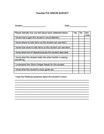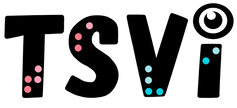- Home
-
Learn
- History of VI >
- Legislation & Laws >
- Vision Professionals >
-
VI Program Resources
>
- Program Printables
- Itinerant Teaching Tips
- Year at a Glance
- VI Program Handbook
- Caseload Analysis
- Organization & Time Management
- Professional Development
- Teacher Standards
- Professional Ethics
- Awards & Recognition
- APH Scholar Program
- Professional Organizations
- Certification Organizations
- Dealing with Challenges
- Professional Publications >
- Relatable Books for All Ages >
- Family Resources >
- Plan
- Basics
-
Teach
- Teaching Strategies >
-
Compensatory Skills Instruction
>
-
Social Skills
>
-
Self Determination
>
- Body Image & Acceptance
- Making Personal Goals
- My Vision Presentation
- My Self-Description
- Create a Personal Data Sheet
- Disclosure Decision
- Disability Statement
- Requesting Help
- Fighting Fears
- My Circle of Support
- Personal Responsibility
- Advocate for Safe Enviroments
- Having Picture Taken
- Coping with Change
- Aging Eyes
- Physical Characteristics
- Political Activism
- Laws Regarding Persons with Disabilities
-
Sensory Efficiency
>
-
Independent Living
>
- Orientation & Mobility Instruction >
- Recreation & Leisure >
-
Career & Vocation
>
-
Grow
- Complete Set Bonus >
-
Recorded Presentations
>
- Webinar: Tips for Being a "Physically Fit" TVI
- Webinar: The Art of Teaching the ECC
- Webinar: Virtual & F2F Strategies
- Webinar: Foundations of Teaching the ECC in the Age of Virtual Instruction
- Webinar: Itinerant Teaching Strategies
- Webinar: Using Themes to Teach the ECC
- Webinar: Conducting a FVLMA
- Webinar: Selecting the Right AT
- Webinar: Developing SMARTER Goals
- Webinar: Determining Service Intensity Using the VISSIT
- Webinar: Activities to Teach the ECC
- Webinar: Accessible Content for BLVI
- Webinar: Accommodations for VI
- Webinar: MIMO Strategies & Activities
- Webinar: SIDPID Strategies & Activities
- Webinar: Standard Course of Study Strategies & Activities
- Webinar: Job Tasks for Job, Career & Life
- Shop
- Jobs
Role of the Classroom TeacherBy: Carmen Willings
teachingvisuallyimpaired.com Updated August 4, 2019 If you have never worked with a student with a visual impairment, you may be apprehensive about having a student with a visual impairment in your class. Even if you have worked with a student with a visual impairment, in the past, you need to understand that each student is unique and will have different needs. Even students with the same visual diagnosis they will have different visual abilities and will have different backgrounds, and have different academic abilities and experiences. The classroom teacher is responsible for instructing the student in the core curriculum as well as collaborating with the Teacher of Students with Visual Impairments (TVI) and other support staff to ensure that the student's unique needs are being met.
The role of the classroom teacher is to manage the classroom in a manner that meets the individual needs of each student in the class. This includes promoting learning and supplementing activities, coordinating and collaborating with support staff, using a variety of teaching approaches, and adapting instruction to include all students. The classroom teacher is in charge of each student's overall academic program.
As the general education teacher, the classroom teacher is responsible for teaching the core curriculum (literacy, mathematics, science, social studies, and so forth). The TVI does not duplicate what the classroom teacher will teach but teaches the students the knowledge and skills they need to participate in the classroom. The TVI will instruct the student in specialized areas and skills that are related to their visual impairments and are important for their educational success, such as braille reading and writing, using assistive devices, and skills for independent living. Int he visual impairment field, these are some of the areas that are known as the Expanded Core Curriculum (ECC). Communication between the classroom teacher and the TVI is critical. Discussing upcoming lessons well in advance will allow discussions on adaptations and any advance instruction in adapted tools or concepts. It is also critical to provide the TVI with materials promptly for the TVI to adapt the materials into an accessible format. If the student has a paraprofessional it is imperative for the classroom teacher to continue to have direct interactions with the student. Although the paraprofessional can reinforce instruction, the paraprofessional is typically not a certified teacher and it is the teacher's responsibility to be aware of the students understanding of content. It is also important to provide the paraprofessional with clear guidelines and discuss as a team, what accommodations are acceptable. IDEA: The LawIDEA is a Federal law that ensures each student with a disability receives a free appropriate public education (FAPE) to meet his or her unique learning needs. Under federal law, students with visual impairments are guaranteed to have the same opportunities for education following the regular curriculum with the necessary supports and services to students ages 3 through age 18 or 21. In general, a district is obligated to provide each qualifying child with a program that meets the child’s unique needs. The primary way of providing a FAPE is through an Individualized Education Program (IEP). The IEP must include a comprehensive statement of the child’s unique educational needs, along with a description of the education and related services to which the child is entitled. As the general education teacher, it is important for you to provide information on the student’s classroom performance, how the student’s disability negatively impact them as well as which accommodations the student uses and what helps them be successful.
Helpful Resources... pdf of Teacher Vision Survey pdf of Teacher Vision Survey
If you have students with complex needs on your caseload, it may be beneficial to provide teachers and teacher assistants with a vision survey to understand their current understanding of the student's vision. Tricia Noe, a Teacher of Students with Visual Impairments with over 35 years experience working with students who are blind or visually impaired with multiple disabilities and former colleague of mine has developed a survey that she has made available to print.

Spungin, Susan. When You Have a Visually Impaired Student in Your Classroom: A Guide for Teachers. American Foundation for the Blind, 2002. This guidebook is written for teachers and addresses how to effectively work with a student with visual impairments and introduces special devices that may be used by the student.
|
History of vi
Visual Impairments
Vi organizations & Agencies
VI book resources
VI Professionals
Professionalism
Instructional Planning
Professional Publications
Educational Programming
Individual Learning Differences
referrals
Medical vision exams
fvlma
additional evaluations
service planning
writing goals
compensatory skills
Guiding Principles Functional Skills Community Based Experiences Concepts to Teach Organization & Study Skills Time Management Virtual Instruction Movies & Assemblies Lectures & Instruction Board Work (Chalk, White, etc.) Daily Schedule Morning Meeting Weather Check Dramatic Play Blocks Numbers & Counting Cranmer Abacus Instruction Algebra Geometry & Spatial Sense Measurement & Data Early Literacy Experiences Create Tactual Books Reading Instruction Reading Efficiency Science Adaptations Social Studies Adaptations Accessible Educational Materials Individual Schedules & Communication Cards Adjust Lighting Large Print Optical Devices for Near Optical Devices for Distance Optical Device Use Photocopying Font Legibility Increase Contrast Pictures & Worksheets Keyboarding Instruction Word Processing and Shortcuts Navigate Computer w/o a Mouse Braille Code Braille Instruction Braille Instruction Materials Writing Braille Summer Reading (braille) Signature & Handwriting Nemeth Braille Code Tactile Graphics Guidelines Creating Tactile Graphics Tactile Graphics Instruction Teacher Made Materials Labeling System assistive technology
Overview of Assistive Technology VI AT Resources Non-Optical Low Vision Devices Video Magnifiers Video Magnifier Instruction Screen Enlargement & Readers Low/Med. Tech Tactual Devices Notetaker Instruction Braillewriter Repair Tactile Graphics Technology Braille Technology Auditory Access Devices Accessing Audio Books iPads as Instructional Tools Making iOS Device Accessible iOS Accessibility Resources VoiceOver Apps for VI Note Taking apps Apps for Accessing Books Identification Apps Navigation & Location Apps Braille Apps Magnifier Apps Sound Making Apps Cause & Effect Apps Vision Skills Apps Apps for Early Learning Read to Me Story Apps Apps for Communication Android Apps for VI sensory efficiency
Sensory Input Encourage Use of Vision Sensory Area & Rooms Lightbox Use Sensory Activities for Students with Multiple Disabilities Sensory Tables Visual Efficiency Skills Visual Attend and Scan Activities Visual Tracking Activities Visual Discrimination Activities Visual Motor Activities Tactual Readiness Developing Skillful Hands Auditory Readiness Listening Skill Instruction independent living
orientation & Mobility
career education
recreation & Leisure
self determination
"Your positive attitude toward the integration and education of the student who is visually impaired may be the most important factor in guaranteeing the success and acceptance of this student in your class and school." -"When You Have Visually Impaired Student in Your Classroom: A guide for Teachers", AFB Press |
|
Teaching Students with Visual Impairments LLC
All Rights Reserved |
- Home
-
Learn
- History of VI >
- Legislation & Laws >
- Vision Professionals >
-
VI Program Resources
>
- Program Printables
- Itinerant Teaching Tips
- Year at a Glance
- VI Program Handbook
- Caseload Analysis
- Organization & Time Management
- Professional Development
- Teacher Standards
- Professional Ethics
- Awards & Recognition
- APH Scholar Program
- Professional Organizations
- Certification Organizations
- Dealing with Challenges
- Professional Publications >
- Relatable Books for All Ages >
- Family Resources >
- Plan
- Basics
-
Teach
- Teaching Strategies >
-
Compensatory Skills Instruction
>
-
Social Skills
>
-
Self Determination
>
- Body Image & Acceptance
- Making Personal Goals
- My Vision Presentation
- My Self-Description
- Create a Personal Data Sheet
- Disclosure Decision
- Disability Statement
- Requesting Help
- Fighting Fears
- My Circle of Support
- Personal Responsibility
- Advocate for Safe Enviroments
- Having Picture Taken
- Coping with Change
- Aging Eyes
- Physical Characteristics
- Political Activism
- Laws Regarding Persons with Disabilities
-
Sensory Efficiency
>
-
Independent Living
>
- Orientation & Mobility Instruction >
- Recreation & Leisure >
-
Career & Vocation
>
-
Grow
- Complete Set Bonus >
-
Recorded Presentations
>
- Webinar: Tips for Being a "Physically Fit" TVI
- Webinar: The Art of Teaching the ECC
- Webinar: Virtual & F2F Strategies
- Webinar: Foundations of Teaching the ECC in the Age of Virtual Instruction
- Webinar: Itinerant Teaching Strategies
- Webinar: Using Themes to Teach the ECC
- Webinar: Conducting a FVLMA
- Webinar: Selecting the Right AT
- Webinar: Developing SMARTER Goals
- Webinar: Determining Service Intensity Using the VISSIT
- Webinar: Activities to Teach the ECC
- Webinar: Accessible Content for BLVI
- Webinar: Accommodations for VI
- Webinar: MIMO Strategies & Activities
- Webinar: SIDPID Strategies & Activities
- Webinar: Standard Course of Study Strategies & Activities
- Webinar: Job Tasks for Job, Career & Life
- Shop
- Jobs

